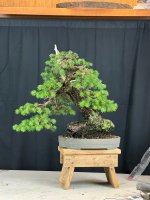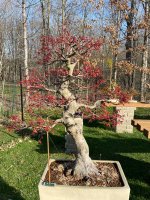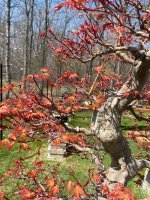If I had to render a guess, the big trunk chip phenomenon has come about in the last few decades as bonsai has grown in popularity in the western world, and also as urbanization has become the default. These together mean that the the easiest and most common source for procuring starter material is the lawn and garden center, where most trees are actually grown with landscape in mind, meaning tall trunks that also happen to be relatively fat. For a great many of us, there is no other reliable economical source of material. Taking a 6ft/2m tree done to shin height, there's no other option but a big chop. Even when digging trees, they're usually from landscape and you're still starting larger than ideal.
Between all these factors, big trunk chops have become standard practice. The issue at hand is that it's become so normalized that, like
@Shibui points out, we often catch each other going at it without realizing that it's not the most effective/efficient method, even under these constraints.
I, for one, can't bring myself to do it. If it's much thicker than my thumb I hesitate to consider it as reasonable material under most circumstances. (There are, of course, many exceptions.)
Smaller trunk chops as part of cut-and-grow from a seedling or sapling is also very common, but again, SMALLER. The smaller the thing you're cutting, the faster and smoother it will heal. Yes, it will take you 10 to 15 years I get that nice thick tapered trunk when starting the size of your pinky, but it would take you just as long to manage the wounds of a chop the width of your wrist and you still won't get the same taper.
Big trunk chops are an act of necessity, not the preferred method.
























